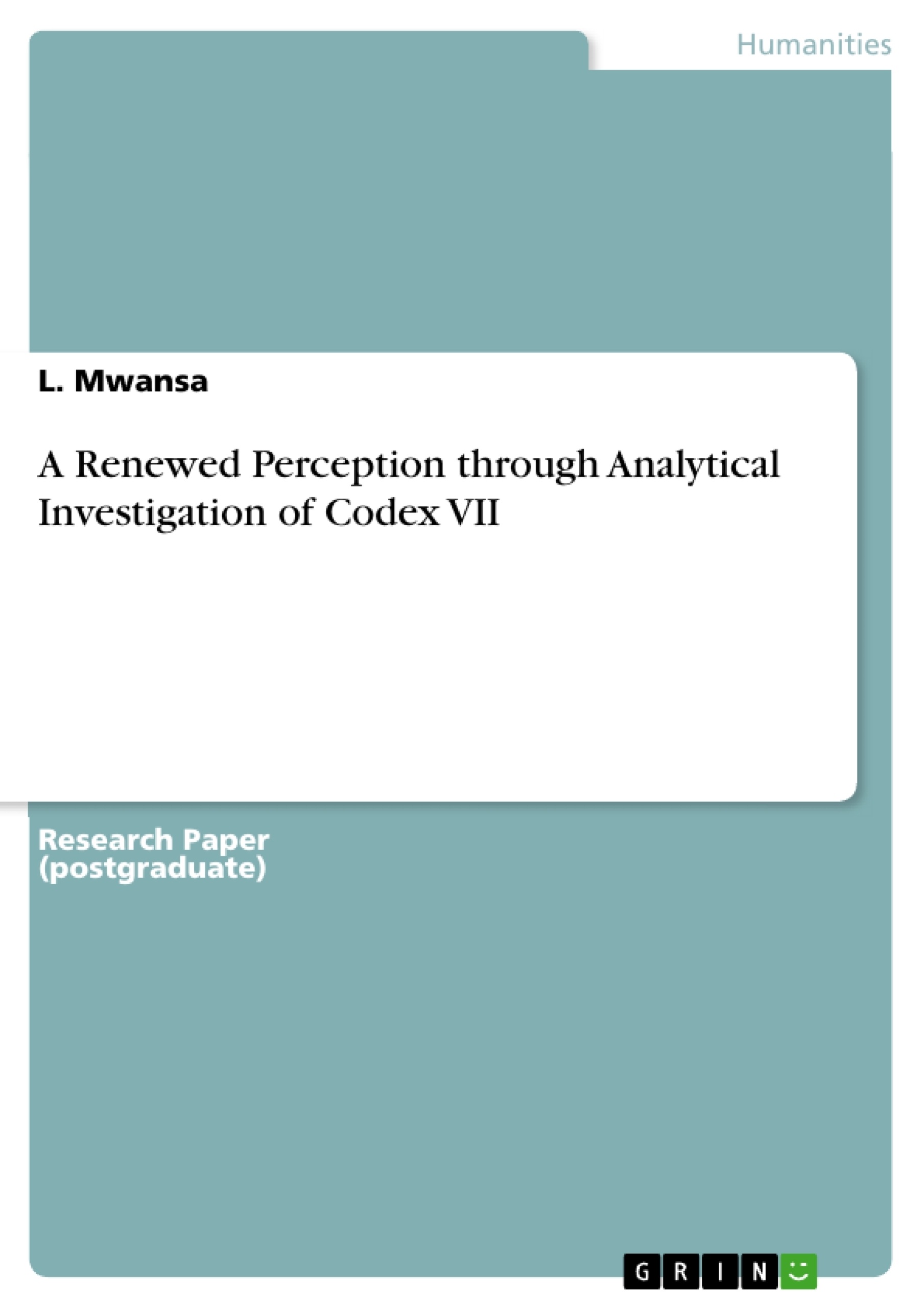This paper deals with the perception through analytical investigation of Codex VII.
According to William John Meegan, Gnosticism is a cultural phenomenon that allows every individual in a religious institution to seek advice directly from the Word of God for them to understand the spiritual laws of God, and consequent to this phenomenology many Gnostic texts have been published about the Judaeo Christian biblical stories and none is wrong conceptually concerning the spiritual Word of God.
William further states that all Gnostic sect coming out of antiquity have the spiritual ability and knowledge of the Word of God to successfully challenge the Roman Catholic Church as an equal. Freemasonry which follows the same constant rules and spiritual techniques as the Roman Catholic Church, has an excellent program. Nonetheless, Freemasonry goes a step further and deals with the problems of the contraries. William believes that Freemasonry is a break away from Catholicism spiritual techniques, and that Alchemy is a product of another materialistic science that made use of the symbolism of the bible to expound, through the language of chemistry the Word of God (William 5).
Gnosticism is fundamentally the mythoi of the individual’s comprehension of the spiritual law of God systematized to the mythological clothing of the world (Esoteric Science’s mathematical and grammatical class of thought systematized to pseudo-mythological story-lines): human vernacular systematized to spiritual codices promulgated in the outer materialistic world’s societal mores. Generally, Gnosticism is chaos because there is no standard (universal) order of mythology in them collectively. According to William, heresy is no doubt another word for sin, that is described in the New Testament as false belief, and Protestantism is a perfect example of heresy because it has literally nothing whatsoever to do with Christianity (William 6).
William John Meegan in his dissertation, Gnosticism and Heresy Proportional to the Teachings of the Roman Catholic Church writes, without preconceptions Gnosticism and Heresy collectively typifies the innumerable forms of mythological belief systems that exude out of the psyche. William however conveys the contrary regarding Gnosticism and Heresy definitions. He believes that Gnosticism and Heresy were conceived and written by highly knowledgeable orthodox Catholic theologians.
Inhaltsverzeichnis (Table of Contents)
- Codex VII
- The Paraphrase of Shem
- Second Treatise of the Great Seth
- Apocalypse of Peter
- The Teachings of Silvanus
- The Three Steles of Seth
Zielsetzung und Themenschwerpunkte (Objectives and Key Themes)
This essay aims to provide a renewed perception of Codex VII through critical analytical investigation. It explores the historical and theological context of the codex, examines its individual tractates, and sheds light on the significance of this Gnostic text in relation to Christian orthodoxy.
- The historical and theological context of Gnosticism
- The interpretation of Gnostic texts in relation to Christian orthodoxy
- The unique characteristics and themes of Codex VII
- The significance of Codex VII within the broader context of Gnostic literature
- The implications of Codex VII for understanding early Christianity
Zusammenfassung der Kapitel (Chapter Summaries)
The essay delves into the content of Codex VII, examining each of its five tractates in detail. It explores the unique perspectives and teachings presented in each tractate, highlighting their similarities and differences with established Christian doctrines.
The Paraphrase of Shem, the first tractate discussed, presents a narrative of Shem's journey to acquire wisdom and understanding. The Second Treatise of the Great Seth, another key tractate, explores the teachings of Seth, offering insights into the nature of God and humanity's relationship to the divine. The Apocalypse of Peter focuses on Peter's visions and revelations, highlighting the importance of recognizing the true nature of Christ and his teachings. The Teachings of Silvanus, while not strictly a Gnostic text, offers a collection of wisdom sayings reflecting biblical, Jewish, Stoic, and Middle Platonic traditions. Finally, the Three Steles of Seth delves into a complex revelation, exploring the divine nature and the process of spiritual awakening.
Schlüsselwörter (Keywords)
Key terms and concepts explored in this essay include Codex VII, Gnosticism, Christianity, Christian orthodoxy, tractate, Paraphrase of Shem, Second Treatise of the Great Seth, Apocalypse of Peter, Teachings of Silvanus, Three Steles of Seth, Nag Hammadi Library, Coptic, early Christianity, and theological interpretation.
- Quote paper
- Dr. L. Mwansa (Author), 2023, A Renewed Perception through Analytical Investigation of Codex VII, Munich, GRIN Verlag, https://www.grin.com/document/1385602



